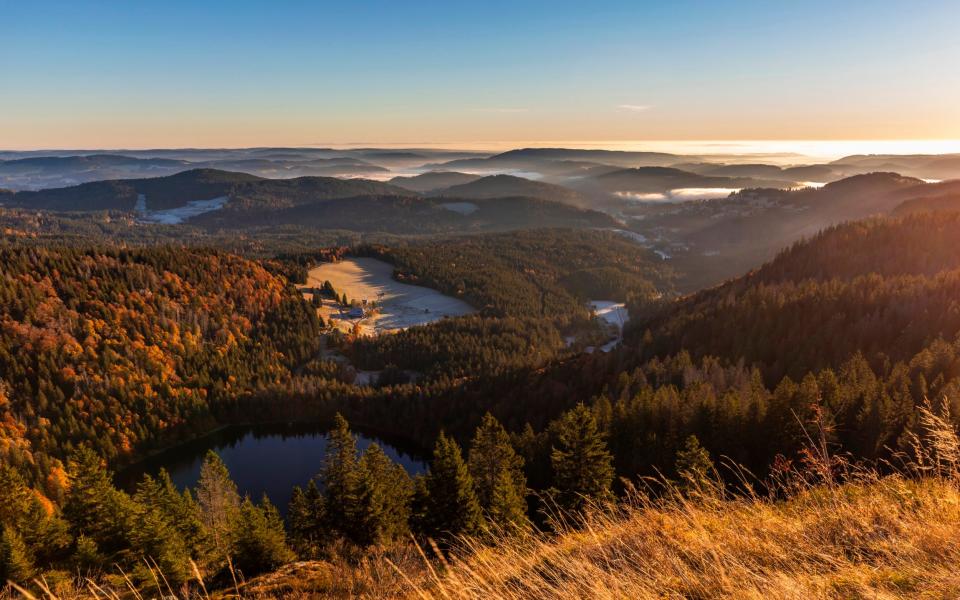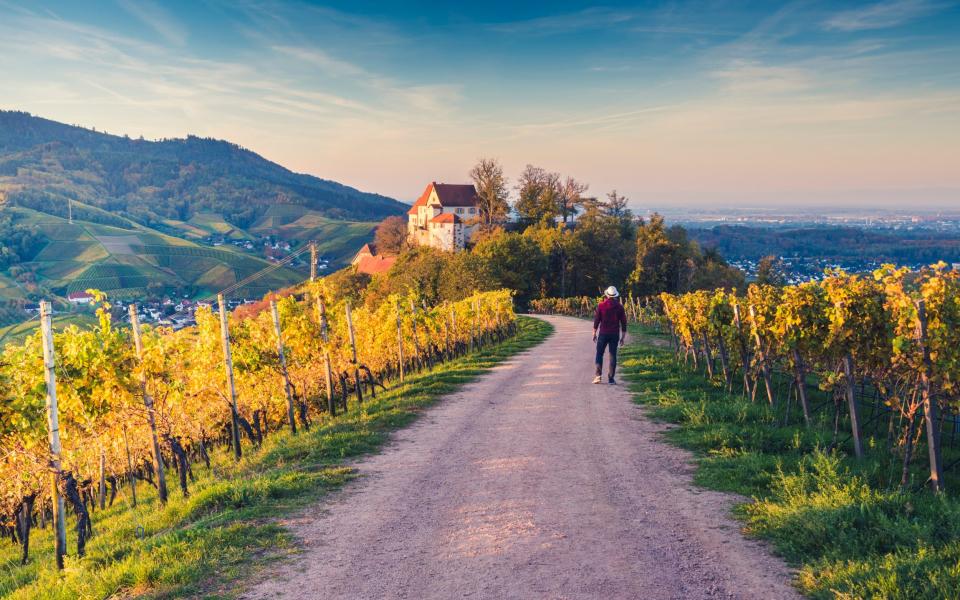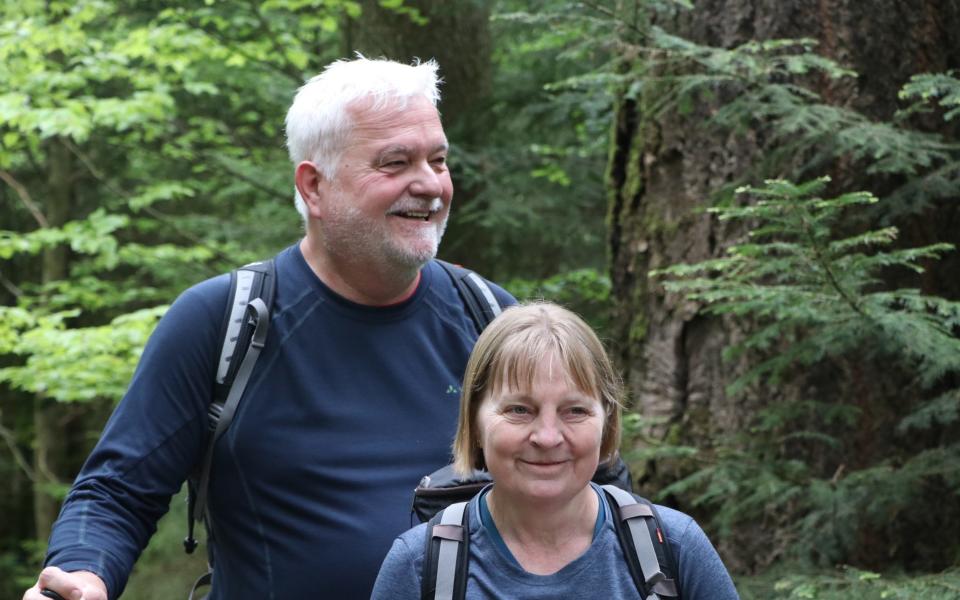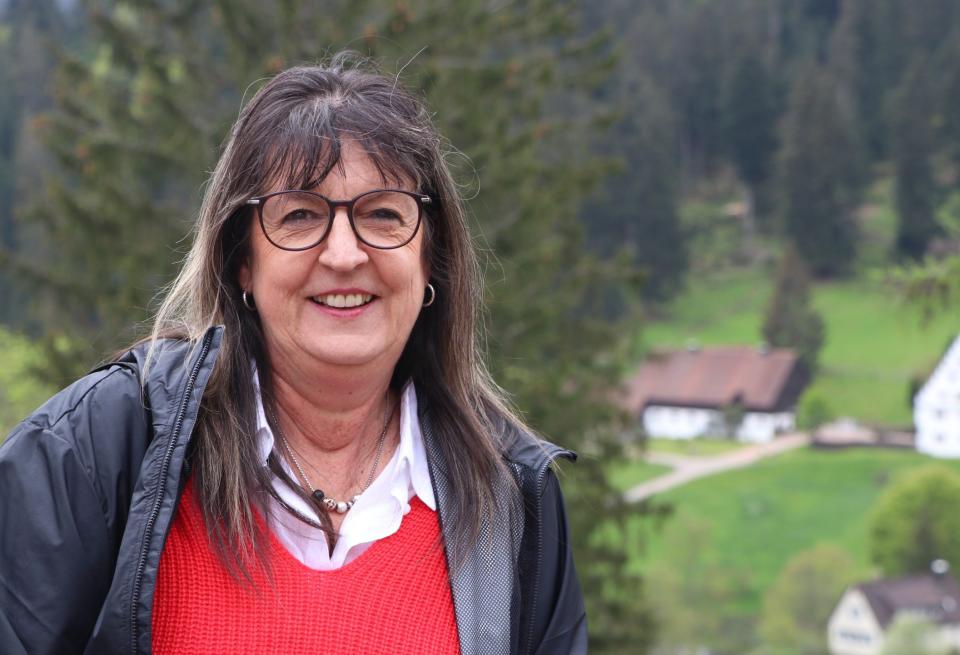Why do so few Britons go on holiday to Germany?

The green was sucking me in, like a moth drawn to a flickering flame.
I’d only stopped to spend a penny, but as I surveyed the vast expanse of woodland before me, I found myself hypnotised, walking on autopilot, deeper, then deeper still, into an enchanted world of incomprehensible natural splendour.
Soon I was lying down on a mattress of crispy leaves, surrounded by toadstools with bulbous grey caps, branches dripping in beard-like lichen, and broken twigs that resembled witches’ brooms. I had a mossy tree stump as a memory foam pillow and a dozen pinecones as lumbar support.
As my heartbeat slowed, the silence grew deafening. A thousand trills, chirps, and whistles from the tits, finches, and flycatchers, flitting between the swaying trunks above me. I was forest bathing, without even realising it. Revitalising body and mind with a rich, cool air that tasted of succulent watercress.

Stretching for 100 miles from north to south, and 25 miles across at its widest point, southwest Germany’s Black Forest is steeped in folklore. The Brothers Grimm set many of their early 19th-century fairy tales in this undulating region. Little Red Riding Hood, Cinderella, Snow White and Rumpelstiltskin have all – in a literary sense, at least – wandered beneath the gloomy “black” canopy that gives the forest its name.
Two hundred years on, however, and today’s woodcutters use chainsaws instead of axes. Anyone lost – small girls in red capes or grown men on electric bicycles – should find a tiny sliver of 3G phone signal. And how about talking to strangers? As I traversed the forest’s empty trails, with only kestrels, red squirrels, and the occasional roe deer for company, it seemed rude not to.
“We come here for the nature, the beauty, and the hiking,” said Claudia and Andreas, a couple on holiday from Nuremberg, who I bumped into on a deserted gravel track, somewhere between Enzklösterle and Loßburg. “This is our second vacation here, and we love the quiet. It’s a hiking paradise.”
This sense of awe was shared by their compatriot Alexander Geilfuss, a touring cyclist from Stuttgart, who stopped to take a rest beside us: a traffic jam, by local standards. “There are many special places to cycle in Germany, but there is nothing quite like the Black Forest. There’s a special combination of pine and beech trees, which you can’t really find anywhere else. The air is so clean and healthy, and when I come here, I feel alive.”

Around six million German tourists visit the Black Forest every year, plus 2.2 million from overseas. Of that number, however, just 54,000 (2.5 per cent) come from Britain. Indeed, mention the Black Forest to most Britons and their first (and perhaps only) thought will be for the chocolate, cream and cherry gateau that has graced many a buffet since the 1970s.
Why then, is it that we head for France in our droves, yet seldom cross the border into a national park that is eight times bigger than any woodland we have in the UK?
“It’s probably because our climates are quite similar,” said tour guide Petra Beeharry, who has shown tourists around the forest-fringed town of Freudenstadt for 15 years, but confessed that I was her very first British holidaymaker.
“But it’s the same for many Germans. I don’t know anyone who has ever gone to England on holiday, apart from to London on a city break. I think people are just naturally drawn to the good weather of southern Europe.”
Perhaps there was some truth in this. Southwest Germany’s climate felt positively British. The altitude, often around 2,500 feet above sea level, left a fresh nip in the air, even in mid-May. On day three of cycling along the Black Forest Panorama Cycling Route – a 150-mile path from north to south – I finally caved and bought myself a pair of thermal gloves.

It is, on one hand, a travesty that more Britons don’t visit this lush corner of Germany. The forest is an adventure playground, crisscrossed by easy to navigate hiking trails, and dotted with remote ski lodges and small towns.
On the other hand, the sense of being off the well-worn British tourist trail is, surely, its biggest appeal. And those that do decide to make this their next holiday destination would probably choose to keep one of Europe’s best-kept secrets to themselves.
Each day I’d enjoy lunch stops in cosy restaurants, with beech fires crackling and fresh tulips on the tables. English was seldom spoken, and I had to rely upon Google to translate the intricacies of hearty schnitzel, bratwurst, and dumpling dishes, nearly always slathered in a rich beer-based gravy. And this was, honestly, refreshingly marvellous. In a world where English has become the lingua franca of travel, it’s nice to still find places close to home where, as a tourist, you can feel wondrously, culturally lost.
In the north of the forest, I stayed in simple but comfortable guesthouses, which seemed rather dated, by British standards. But that’s not to say that a higher end of hostelry can’t be found elsewhere. In the south especially, closer to the borders of France and Switzerland, there are some good four- and five-star hotels, with restaurants that strive to give local ingredients a fresher, often Gallic or Iberian twist.

At Romantik Hotel Rindenmühle, on the outskirts of the walled town of Villingen-Schwenningen, the menu drifted from consommé to beef tartare, via Burgundy jus and Delice du Pommard with Roquefort. Meanwhile, at Parkhotel Adler in Hinterzarten, they served up a delicate afternoon tea that the Ritz would be proud of, followed by an evening menu of Iberico sausages, pastis foams and lemon gremolata.
Combined with a bottle of Rhine Valley Riesling or a Black Forest Pinot Noir, and in just one little corner of Germany, barely known to the British, I discovered Europe at its very best.
How to do it
Eurowings and British Airways fly daily from London Heathrow to Stuttgart, which is less than an hour’s drive to Pforzheim, the gateway to the Black Forest, and close to the start of the Black Forest Panorama Cycle Route. Pforzheim (in the north) and Hinterzarten (in the south) can also be reached by train from London, via Freiburg im Breisgau, Strasbourg and Paris.
At the start of the ride in Pforzheim, stay at Gute Hoffnung Hotel, which has small but comfortable rooms and a good continental breakfast. Doubles from £60. As you travel south, accommodation tends to reach a higher standard overall, with plenty of guesthouses to choose from. Parkhotel Adler in Hinterzarten is one of the best in the region and has indoor and outdoor swimming pools, a handful of saunas and a fitness centre. Doubles from £362, including breakfast.
More Information at www.germany.travel/en

